Read """" BILL GATES """ fully successful story of life since 1955 to 2018...
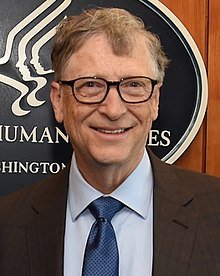 Business person Bill Gates established the world's biggest programming business, Microsoft, with Paul Allen, and in this manner wound up one of the most extravagant men on the planet.
Business person Bill Gates established the world's biggest programming business, Microsoft, with Paul Allen, and in this manner wound up one of the most extravagant men on the planet.
Who Is Bill Gates?
Business visionary and specialist Bill Gates (conceived October 28, 1955) and his accomplice Paul Allen established and manufactured the world's biggest programming business, Microsoft, through mechanical development, sharp business technique and forceful business strategies. Simultaneously, Gates ended up one of the most extravagant men on the planet. In February 2014, Gates reported that he was venturing down as Microsoft's executive to center around beneficent work at his establishment, the Bill and Melinda Gates Foundation.
Total assets and House
In March 1986, Bill Gates took Microsoft open with a first sale of stock (IPO) of $21 per share, making him a moment mogul at age 31. Entryways held 45 percent of the organization's 24.7 million offers, making his stake around then $234 million of Microsoft's $520 million.
After some time, the organization's stock expanded in esteem and split various circumstances. In 1987, Bill Gates turned into a very rich person when the stock hit $90.75 an offer. From that point forward, Gates has been at the best, or if nothing else close to the best, of Forbes' yearly rundown of the main 400 wealthiest individuals in America. In 1999, with stock costs at an unequaled high and the stock part eight-crease since its IPO, Gates' riches quickly beat $101 billion.
In 1997, Gates and his family moved into a 55,000-square-foot, $54-million house on the shore of Lake Washington. In spite of the fact that the house fills in as a business focus, it is said to be exceptionally comfortable for the couple and their three kids.
Spouse and Children
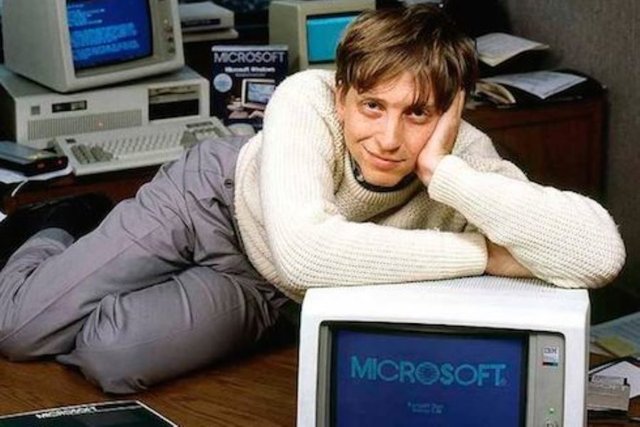
In 1987, a 23-year-old Microsoft item supervisor named Melinda French got the attention of Bill Gates, at that point 32. The brilliant and composed Melinda was an ideal counterpart for Gates. In time, their relationship developed as they found a private and scholarly association. On January 1, 1994, Melinda and Bill were hitched in Hawaii.
Following the overwhelming demise of his mom to bosom malignancy only a couple of months after their wedding, Bill and Melinda took some time off in 1995 to movement and get another point of view on life and the world. In 1996, their first little girl, Jennifer, was conceived. Their child, Rory, was conceived in 1999, and a second girl, Phoebe, landed in 2002.
Bill Gates Photo
READ ARTICLE: 7 Fun Facts About Bill Gates.
The Bill and Melinda Gates Foundation
In 1994, Bill and Melinda Gates built up the William H. Entryways Foundation, which was committed to supporting training, world wellbeing and interest in low-wage networks. With Melinda's impact, Bill had appreciated turning into a community pioneer in the strides of his mom, examining the charitable work of American mechanical titans Andrew Carnegie and John D. Rockefeller. He understood that he had a commitment to give a greater amount of his riches to philanthropy. In 2000, the couple consolidated a few family establishments and made a $28 billion commitment to shape the Bill and Melinda Gates Foundation.
In 2000, Bill Gates ventured down from the everyday tasks of Microsoft, turning over the activity of CEO to school companion Steve Ballmer, who had been with Microsoft since 1980. He situated himself as boss programming designer so he could focus on what was for him the more enthusiastic side of the business, however he remained executive of the board.
Throughout the following couple of years, Bill's association with the Bill and Melinda Gates Foundation involved quite a bit of his opportunity and significantly a greater amount of his advantage. In 2006, Gates declared he was progressing himself from all day work at Microsoft to commit greater quality time to the establishment. His last entire day at Microsoft was June 27, 2008. In February 2014, Gates ventured down as executive of Microsoft keeping in mind the end goal to move into another situation as innovation counsel; long-term Microsoft CEO Steve Ballmer was supplanted by 46-year-old Satya Nadella.
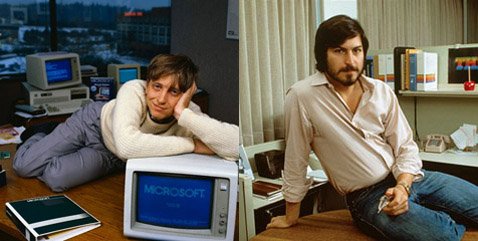
Entryways keeps on committing quite a bit of his opportunity and vitality to crafted by the Bill and Melinda Gates Foundation. The association handles global and household issues, for example, wellbeing and training and helping understudies in the United States move toward becoming school prepared. In 2015, Gates stood up for national Common Core measures in grades K through 12 and contract schools. Doors likewise turned out to be a weighty boss when, around this time, the establishment reported that it would give its workers multi year's paid leave after the birth or the selection of a tyke.
In 2017, the establishment propelled the first of what was to wind up its yearly "Goalkeepers" report, an examination of advance made in a few vital territories identified with general wellbeing, including kid mortality, ailing health and HIV. At the time, Gates distinguished irresistible and constant illness as the two greatest general wellbeing worries that should have been tended to over the coming decade.
In April 2018, Gates reported that he was cooperating with Google prime supporter Larry Page to give $12 million in subsidizing to a widespread influenza antibody. He said the assets would be granted in stipends of up to $2 million for singular endeavors that are "intense and inventive," with a point of starting clinical preliminaries by 2021. Albeit some addressed whether $12 million would be sufficient to start any genuine therapeutic leap forward, others adulated the goals behind the venture, while Gates showed that there could be more to come.
Alzheimer's Research and 'Savvy City'
Alongside the work done through his establishment, Gates in November 2017 uncovered that he was contributing $50 million of his own cash into the Dementia Discovery Fund, and would take after with another $50 million toward start-up wanders working in Alzheimer's examination. It was said to be an individual issue for Gates, who has seen the overwhelming impacts of the illness all alone relatives.
"Any sort of treatment would be a gigantic progress from where we are today," he told CNN, including, "the long haul objective must be cure."
Around a similar time, it was uncovered that one of Gates' organizations had put $80 million into the improvement of a "shrewd city" close Phoenix, Arizona. The proposed city, named Belmont, will "make a ground breaking network with a correspondence and foundation spine that grasps forefront innovation, outlined around rapid computerized systems, server farms, new assembling advancements and appropriation models, self-ruling vehicles and independent coordinations center points," as indicated by the Belmont Partners land venture gathering.
Of the almost 25,000 sections of land of land assigned for the site, it was accounted for that 3,800 sections of land will go toward office, business and retail space, and another 470 sections of land will be utilized for government funded schools, leaving space for 80,000 private units.
At the point when Was Bill Gates Born?
Bill Gates was conceived William Henry Gates III on October 28, 1955, in Seattle, Washington.
Family and Childhood

Bill Gates experienced childhood in an upper white collar class family with his more established sister, Kristianne, and more youthful sister, Libby. Their dad, William H. Doors Sr., was a promising, if to some degree modest, law understudy when he met his future spouse, Mary Maxwell. She was an athletic, active understudy at the University of Washington, effectively engaged with understudy issues and initiative. The Gates family climate was warm and close, and every one of the three kids were urged to be focused and make progress toward magnificence. Bill hinted at early aggressiveness when he composed family athletic recreations at their mid year house on Puget Sound. He likewise savored playing table games (Risk was his top pick) and exceeded expectations at Monopoly.
Bill had a cozy association with his mom, Mary, who after a concise vocation as an educator gave her an opportunity to helping bring up the kids and taking a shot at metro undertakings and with philanthropies. She likewise served on a few corporate sheets, including those of the First Interstate Bank in Seattle (established by her granddad), the United Way and International Business Machines (IBM). She would regularly take Bill along when she volunteered in schools and at network associations.
Instruction
Bill was an insatiable peruser as a tyke, spending numerous hours poring over reference books, for example, the reference book. Around the age of 11 or 12, Bill's folks started to have worries about his conduct. He was doing great in school, yet he appeared to be exhausted and pulled back now and again, and his folks stressed he may turn into a recluse. In spite of the fact that they were solid professors in government funded instruction, when Bill turned 13, they enlisted him at Seattle's select preliminary Lakeside School. He bloomed in almost the entirety of his subjects, exceeding expectations in math and science, yet in addition doing in dramatization and English.
While at Lakeside School, a Seattle PC organization offered to give PC time to the understudies. The Mother's Club utilized continues from the school's scrounge deal to buy a print terminal for understudies to utilize. Bill Gates ended up spellbound with what a PC could do and invested quite a bit of his free energy taking a shot at the terminal. He composed a tic-tac-toe program in BASIC script that enabled clients to play against the PC.
Entryways moved on from Lakeside in 1973. He scored 1590 out of 1600 on the school SAT test, an accomplishment of scholarly accomplishment that for quite a long while he bragged about while acquainting himself with new individuals.
Dropping Out of College
Entryways selected at Harvard University in the fall of 1973, initially thinking about a vocation in law. In any case, his first year saw him invest a greater amount of his energy in the PC lab than in class. Entryways did not so much have an investigation regimen. Rather, he could get by on a couple of long periods of rest, pack for a test, and go with a sensible review. Much to his folks' daunt, inside two years Gates dropped out of school in 1975 to seek after his business, Microsoft, with accomplice Paul Allen.
Bill Gates and Paul Allen
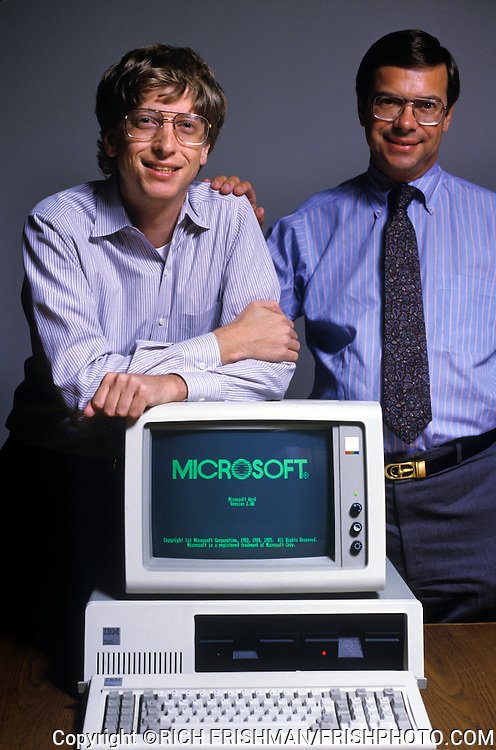
At Lakeside School Gates met Paul Allen, who was two years his senior. The combine turned out to be quick companions, holding over their regular eagerness for PCs, despite the fact that they were altogether different individuals. Allen was more held and modest. Bill was feisty and on occasion confrontational. Despite their disparities, they both hung out taking a shot at programs. At times, the two differ and would conflict over who was correct or who should run the PC lab. On one event, their contention raised to the point where Allen prohibited Gates from the PC lab.
At a certain point, Gates and Allen had their school PC benefits repudiated for exploiting programming glitches to get free PC time from the organization that gave the PCs. After their probation, they were permitted back in the PC lab when they offered to troubleshoot the program. Amid this time, Gates built up a finance program for the PC organization the young men hacked into and a booking program for the school.
In 1970, at 15 years old, Bill Gates and Paul Allen started a new business as partners, creating "Traf-o-Data," a PC program that checked activity designs in Seattle. They got $20,000 for their endeavors. Entryways and Allen needed to begin their own organization, yet Gates' folks needed him to complete school and go ahead to school, where they trusted he would work to end up a legal counselor.
Allen went to Washington State University, while Gates went to Harvard, however the combine kept in contact. In the wake of going to school for a long time, Allen dropped out and moved to Boston, Massachusetts, to work for Honeywell. Around this time, he indicated Gates a version of Popular Electronics magazine including an article on the Altair 8800 small PC unit. Both young men were intrigued with the conceivable outcomes of what this PC could make in the realm of individualized computing.
The Altair was made by a little organization in Albuquerque, New Mexico, called Micro Instrumentation and Telemetry Systems (MITS). Entryways and Allen reached the organization, declaring that they were taking a shot at a BASIC programming program that would run the Altair PC. As a general rule, they didn't have an Altair to work with or the code to run it, however they needed to know whether MITS was keen on somebody growing such programming.
MITS was, and its leader, Ed Roberts, approached the young men for an exhibition. Doors and Allen mixed, spending the following two months composing the product at Harvard's PC lab. Allen ventured out to Albuquerque for a trial at MITS, failing to have given it a shot on an Altair PC. It worked superbly. Allen was enlisted at MITS, and Gates before long left Harvard to work with him. Together they established Microsoft.
Paul Allen stayed with Microsoft until 1983, when he was determined to have Hodgkin's malady. In spite of the fact that his growth went into reduction multi year later with concentrated treatment, Allen surrendered from the organization. Gossipy tidbits flourish with respect to why Allen left Microsoft. Some say Bill Gates drove him out, yet numerous say it was an extraordinary ordeal for Allen and he saw there were different open doors that he could put his opportunity in.
Bill Gates and Microsoft
In 1975, Bill Gates and Paul Allen framed Micro-Soft, a mix of "miniaturized scale PC" and "programming" (they dropped the hyphen to Microsoft inside multi year). Despite the fact that the organization began on temperamental balance, by 1979 Microsoft was earning roughly $2.5 million, and, at 23 years old, Gates put himself as the leader of the organization. With his insight for programming improvement and a sharp marketing prudence, he drove the organization and filled in as its representative. Doors by and by inspected each line of code the organization sent, frequently modifying code himself when he saw it fundamental.
Following the advancement of programming for IBM, in the vicinity of 1979 and 1981 Microsoft's development detonated. Staff expanded from 25 to 128, and income shot up from $2.5 million to $16 million. In mid-1981, Gates and Allen consolidated Microsoft, and Gates was named president and administrator of the board. Allen was named official VP.
Early Years at Microsoft
At in the first place, everything was not smooth cruising. Despite the fact that Microsoft's BASIC programming program for the Altair PC got the organization a charge and eminences, it wasn't meeting their overhead. As per Gates' later record, just around 10 percent of the general population utilizing BASIC in the Altair PC had really paid for it. Microsoft's BASIC programming was well known with PC specialists, who got pre-advertise duplicates and were imitating and disseminating them for nothing. Right now, a great part of the PC lovers were individuals not in it for the cash. They felt the simplicity of proliferation and dissemination enabled them to impart programming to companions and kindred PC aficionados. Bill Gates thought in an unexpected way. He saw the free appropriation of programming as taking, particularly when it included programming that was made to be sold.
In February 1976, Gates composed an open letter to PC specialists, saying that proceeded with circulation and utilization of programming without paying for it would "keep great programming from being composed." fundamentally, pilfering programming would dishearten designers from putting time and cash into making quality programming. The letter was disagreeable with PC devotees, however Gates adhered to his convictions and would utilize the danger of advancement as a guard when looked with charges of out of line business rehearses.
Doors had a sharp association with MITS president Ed Roberts, regularly bringing about yelling matches. The aggressive Gates conflicted with Roberts on programming improvement and the course of the business. Roberts considered Gates ruined and unpleasant. In 1977, Roberts sold MITS to another PC organization and returned to Georgia to enter medicinal school and turn into a specialist.
Doors and Allen were individually. The combine needed to sue the new proprietor of MITS to hold the product rights they had created for Altair. Microsoft composed programming in various configurations for other PC organizations, and, toward the start of 1979, Gates moved the organization's tasks to Bellevue, Washington, only east of Seattle. Entryways was happy to be home again in the Pacific Northwest, and devoted himself completely to his work. Every one of the 25 workers of the youthful organization had expansive duties regarding all parts of the task, item advancement, business improvement and promoting.
Microsoft's Software for IBM PCs
As the PC business developed, with organizations like Apple, Intel and IBM creating equipment and segments, Bill was persistently out and about touting the benefits of Microsoft programming applications. He frequently took his mom with him. Mary was profoundly regarded and all around associated with her enrollment on a few corporate sheets, including IBM's. It was through Mary that Bill Gates met the CEO of IBM.
In November 1980, IBM was searching for programming that would work their up and coming (PC) and moved toward Microsoft. Legend has it that at the primary gathering with Bill Gates somebody at IBM mixed up him for an office partner and requesting that he serve espresso.
Doors looked extremely youthful, however he immediately awed IBM, persuading them that he and his organization could address their issues. The main issue was that Microsoft had not built up the essential working framework that would run IBM's new PCs. Not to be halted, Gates purchased a working framework that was created to keep running on PCs like IBM's PC. He made an arrangement with the product's engineer, making Microsoft the select authorizing specialist and later full proprietor of the product yet not letting them know of the IBM bargain. The organization later sued Microsoft and Gates for withholding essential data. Microsoft settled out of court for an undisclosed sum, however neither Gates nor Microsoft admitted to any bad behavior.
Doors needed to adjust the recently acquired programming to work for the IBM PC. He conveyed it for a $50,000 expense, a similar value he had paid for the product in its unique frame. IBM needed to purchase the source code, which would have given them the data to the working framework. Doors won't, rather recommending that IBM pay an authorizing expense for duplicates of the product sold with their PCs. Doing this enabled Microsoft to permit the product they called MS-DOS to some other PC maker, should other PC organizations clone the IBM PC, which they before long did. Microsoft likewise discharged programming called Softcard, which enabled Microsoft BASIC to work on Apple II machines.
By 1983, Microsoft was running worldwide with workplaces in Great Britain and Japan, and with 30 percent of the world's PCs running on its product.
Bill Gates and Steve Jobs
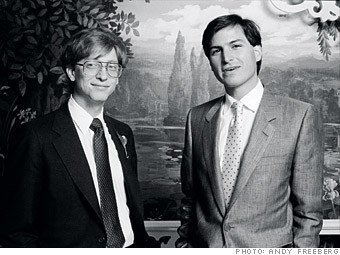
In spite of the fact that their competition is legend, Microsoft and Apple shared a large number of their initial advancements. In 1981, Apple, at the time drove by Steve Jobs, welcomed Microsoft to help create programming for Macintosh PCs. A few designers were associated with both Microsoft improvement and the advancement of Microsoft applications for Macintosh. The coordinated effort could be found in some common names between the Microsoft and Macintosh frameworks.
It was through this information sharing that Microsoft was to create Windows, a framework that utilized a mouse to drive a realistic interface, showing content and pictures on the screen. This contrasted enormously from the content and-console driven MS-DOS framework where all content designing appeared on the screen as code and not what really would be printed. Bill Gates immediately perceived the risk this sort of programming may posture for MS-DOS and Microsoft by and large. For the unsophisticated client—which was a large portion of the purchasing open—the realistic symbolism of the contending VisiCorp programming utilized as a part of a Macintosh framework would be such a great amount of simpler to utilize.
Doors reported in a promoting effort that another Microsoft working framework was going to be created that would utilize a realistic interface. It was to be called "Windows and would be compatible with all PC software products developed on the MS-DOS system. The announcement was a bluff, in that Microsoft had no such program under development. But as a marketing tactic it was sheer genius, as nearly 30 percent of the computer market was using the MS-DOS system and would wait for Windows software rather than change to a new system. Without people willing to change formats, software developers were unwilling to write programs for the VisiCorp system and it lost momentum by early 1985.
In November 1985, nearly two years after his announcement, Bill Gates and Microsoft launched Windows. Visually the Windows system looked very similar to the Macintosh system Apple Computer Corporation had introduced nearly two years earlier. Apple had earlier given Microsoft full access to their technology while it was working on making Microsoft products compatible for Apple computers. Gates had advised Apple to license their software but they ignored the advice, being more interested in selling computers.
Once again, Gates took full advantage of the situation and created a software format that was strikingly similar to the Macintosh. Apple threatened to sue, and Microsoft retaliated, saying it would delay shipment of its Microsoft-compatible software for Macintosh users. In the end, Microsoft prevailed in the courts because it could prove that while there were similarities in how the two software systems operated, each individual function was distinctly different.
Entrepreneur and Businessman
Bill Gates' intelligence allowed him to be able to see all sides of the software industry—product development and corporate strategy. When analyzing any corporate move, he would develop a profile of all the possible cases and run through them, asking questions about anything that could possibly happen.
Despite the success of Microsoft, Bill Gates never felt totally secure. Always looking over his shoulder to check on the competition, Gates developed a white-hot drive and competitive spirit. Gates expected everyone in the company to have the same dedication. Gates' assistant reported coming to work early to find someone sleeping under a desk. She considered calling security or the police, until she discovered it was Gates. His confrontational management style also became legend, as he would challenge employees and their ideas to keep the creative process going. An unprepared presenter could hear, "That's the stupidest thing I've ever heard!" from Gates. But this was as much a test of the rigor of the employee as it was Gates' passion for his company. He was constantly checking the people around him to see if they were really convinced of their ideas.
Outside the company, Bill Gates was gaining a reputation as a ruthless competitor. Several tech companies, led by IBM, began to develop their own operating system, called OS/2, to replace MS-DOS. Rather than give in to the pressure, Gates pushed ahead with the Windows software, improving its operation and expanding its uses. In 1989, Microsoft introduced Microsoft Office, which bundled office productivity applications such as Microsoft Word and Excel into one system that was compatible with all Microsoft products. The applications were not as easily compatible with OS/2. Microsoft's new version of Windows sold 100,000 copies in just two weeks, and OS/2 soon faded away. This left Microsoft with a virtual monopoly on operating systems for PCs. Soon the Federal Trade Commission began to investigate Microsoft for unfair marketing practices.
Throughout the 1990s, Microsoft faced a string of Federal Trade Commission and Justice Department investigations. Some related allegations that Microsoft made unfair deals with computer manufacturers who installed the Windows operating system on their computers. Other charges involved Microsoft forcing computer manufactures to sell Microsoft's Internet Explorer as a condition for selling the Windows operating system with their computers.
At one point, Microsoft faced a possible break up of its two divisions—operating systems and software development. Microsoft defended itself, harking back to Bill Gates' earlier battles with software piracy and proclaiming that such restrictions were a threat to innovation. Eventually, Microsoft was able to find a settlement with the federal government to avoid a breakup.
Through it all, Gates found some inventive ways to deflect the pressure with lighthearted commercials and public appearances at computer trade shows during which he posed as Star Trek's Mr. Spock. Gates continued to run the company and weather the federal investigations through the 1990s.
Awards
In addition to being one of the richest and most successful businessmen in the history of the world, Bill Gates has also received numerous awards for philanthropic work. Time magazine named Gates one of the most influential people of the 20th century. The magazine also named Gates and his wife Melinda, along with rock band U2's lead singer, Bono, as the 2005 Persons of the Year.
Gates holds several honorary doctorates from universities throughout the world. He was knighted as an honorary Knight Commander of the Order of the British Empire bestowed by Queen Elizabeth II in 2005.
In 2006, Gates and his wife were awarded the Order of the Aztec Eagle by the Mexican government for their philanthropic work throughout the world in the areas of health and education. In 2016, Gates and his wife Melinda were recognized for their philanthropic work when they were named recipients of the Presidential Medal of Freedom by President Barack Obama.
In early 2018, Gates achieved another distinction with the announcement he would guest star on an episode of The Big Bang Theory. The sitcom's honor roll of guest stars includes Leonard Nimoy and George Takei of Star Trek fame, entrepreneur Elon Musk and scientists Stephen Hawking and Bill Nye.
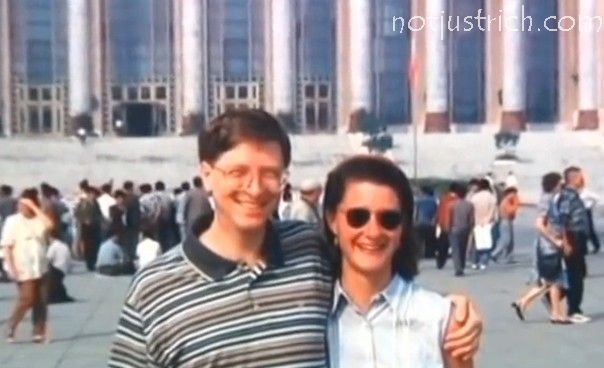
very good article with full of all information about Bill Gates 's family,as i have read i like it
Thank you so much sir for read it...